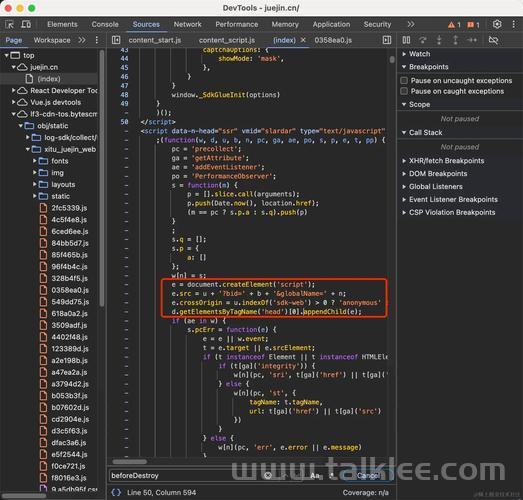前端缓存接口数据
在前端缓存接口数据时,可以结合 浏览器缓存策略、前端存储(localStorage、sessionStorage、IndexedDB)、内存缓存(变量存储)、Service Worker 等方式,选择适合的方案。
- 使用浏览器 HTTP 缓存(推荐,依赖后端支持)
如果接口数据不会频繁变化,可以使用 HTTP 缓存策略(强缓存 + 协商缓存),减少不必要的请求。
后端设置 Cache-Control
在接口响应头中,服务器可以设置缓存策略:
Cache-Control: max-age=600, public
ETag: “abc123”
Last-Modified: Wed, 20 Mar 2025 10:00:00 GMT
max-age=600:缓存 10 分钟,期间不会请求服务器。
ETag 和 Last-Modified:客户端在缓存过期后,会通过 If-None-Match 或 If-Modified-Since 进行 协商缓存。
前端请求接口
fetch(’/api/data’)
.then(response => response.json())
.then(data => console.log(data));
适用场景:
数据变化不频繁的 API(如新闻、天气、配置信息)。
依赖服务器缓存策略的前端应用。
- 前端存储(localStorage / sessionStorage / IndexedDB)
如果数据需要在 浏览器端长时间存储,可以使用 localStorage 或 IndexedDB。
localStorage 方案
// 缓存 API 数据
async function fetchData() {
const cacheKey = ‘api_data’;
const cacheTimeKey = ‘api_data_timestamp’;
const cacheTimeLimit = 10 * 60 * 1000; // 10 分钟
const cachedData = localStorage.getItem(cacheKey);
const cacheTimestamp = localStorage.getItem(cacheTimeKey);
// 如果缓存存在且未过期,直接使用
if (cachedData && cacheTimestamp && Date.now() - cacheTimestamp
return JSON.parse(cachedData);
}
// 否则,重新请求数据
const response = await fetch(’/api/data’);
const data = await response.json();
// 存储新数据
localStorage.setItem(cacheKey, JSON.stringify(data));
localStorage.setItem(cacheTimeKey, Date.now());
return data;
}
fetchData().then(data => console.log(data));
适用场景:
缓存数据一段时间,减少 API 调用。
适用于用户配置、城市信息、字典数据等相对静态的数据。
IndexedDB 方案(适用于大数据量存储)
async function saveDataToIndexedDB(data) {
const db = await idb.openDB(‘myDatabase’, 1, {
upgrade(db) {
db.createObjectStore(‘apiData’);
},
});
await db.put(‘apiData’, data, ‘cachedData’);
}
async function getDataFromIndexedDB() {
const db = await idb.openDB(‘myDatabase’, 1);
return db.get(‘apiData’, ‘cachedData’);
}
适用场景:
大数据存储(如离线数据同步),比 localStorage 性能更好。
PWA 或离线模式。
- 内存缓存(适用于单页面应用)
在 Vue / React / Angular 项目中,可以用 全局变量、Vuex / Pinia / Redux / Zustand 缓存数据,避免重复请求 API。
const cache = new Map();
async function fetchWithMemoryCache(url) {
if (cache.has(url)) {
return cache.get(url);
}
const response = await fetch(url);
const data = await response.json();
cache.set(url, data);
return data;
}
适用场景:
应用生命周期内需要频繁访问的 API(如用户信息、系统设置)。
适用于单页应用(SPA),页面刷新后缓存会丢失。
- Service Worker(离线缓存 + 适用于 PWA)
Service Worker 可以拦截网络请求,实现 离线缓存 和 智能更新。
self.addEventListener(‘fetch’, event => {
event.respondWith(
caches.match(event.request).then(cachedResponse => {
if (cachedResponse) {
return cachedResponse;
}
return fetch(event.request).then(response => {
return caches.open(‘api-cache’).then(cache => {
cache.put(event.request, response.clone());
return response;
});
});
})
);
});
适用场景:
PWA(渐进式 Web 应用),实现离线模式。
缓存 API 请求,提高性能。
- 结合多种缓存策略
可以结合 不同缓存方式 来优化 API 调用,例如:
-
短时间内用内存缓存(提升性能)。
-
较长时间用 localStorage 或 IndexedDB(防止丢失)。
-
服务器控制 Cache-Control 进行 HTTP 缓存(减少请求)。
-
PWA 使用 Service Worker(实现离线模式)。
示例:组合缓存策略
async function fetchDataWithCaching(url) {
// 1. 先从内存缓存获取
if (cache.has(url)) {
return cache.get(url);
}
// 2. 再从 localStorage 获取
const cachedData = localStorage.getItem(url);
if (cachedData) {
return JSON.parse(cachedData);
}
// 3. 最后请求 API
const response = await fetch(url, { cache: ‘force-cache’ });
const data = await response.json();
// 4. 更新缓存
cache.set(url, data);
localStorage.setItem(url, JSON.stringify(data));
return data;
}
适用场景:
优化性能,减少 API 调用。
适用于数据变化不频繁的场景。
总结
最佳实践:
短时间缓存(几分钟):内存(变量、Vuex、Redux)。
页面刷新后仍需要缓存:localStorage / IndexedDB。
减少 API 请求:HTTP 缓存 (Cache-Control, ETag)。
PWA 离线支持:Service Worker。
选择合适的缓存方式可以大幅提升前端性能,减少 API 负担,让页面加载更快!







